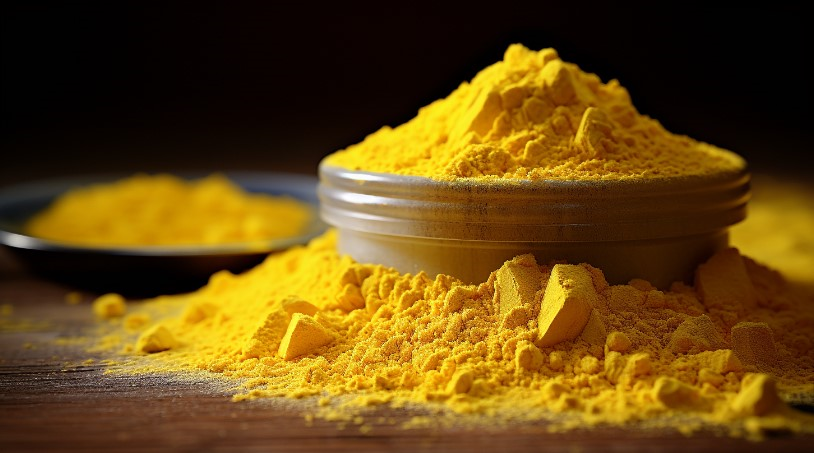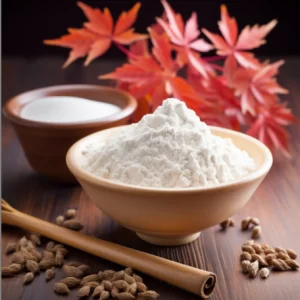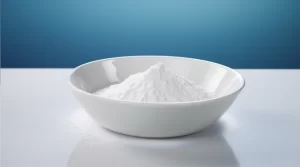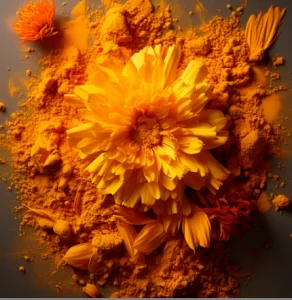장내 세균총과 중국 전통 의학의 상호작용 개발

Intestinal flora is the most important microecosystem of the human body. A large number of studies have shown that natural active ingredients such as traditional Chinese medicine affect the balance of intestinal microecology. At the same time, various enzymes produced by intestinal microorganisms also metabolize and transform the active molecules in drugs, thus affecting the bioavailability and pharmacological activity of drugs. In this paper, the regulatory effects of natural medicines such as saponins, alkaloids and polysaccharides on the composition and structure of intestinal flora and the metabolic transformation of active components of traditional Chinese medicine by intestinal flora were reviewed in order to provide references for the research on the interaction between traditional Chinese medicine and intestinal flora.
Regulation of the active components of traditional Chinese medicine on intestinal flora
Saponin
Active saponins are the active components of many Chinese herbs, such as ginseng, liquorice and bupleurum, which have antibacterial and anticancer properties. LONG et al. [1] found that ginsenoside Rg1 could up-regulate the relative abundance of Spirillaceae in the intestines of colitis mice, down-regulate the relative abundance of Staphylococcus, Bacteroides, Prevotella and Eubacterium, and regulate the level of inflammatory factors, thus repairing the intestinal mucosal barrier and relieving colitis. Tian et al. [2] found that gypenosides could restore the abundance of intestinal flora in CTC liver injury mouse models, improve the metabolic activities of related flora, and alleviate the liver injury caused by CTC. In addition, gypenosides can also increase beneficial bacteria in the gut of APCMin/+ model mice, reduce sulfate-reducing bacteria, and enhance intestinal mucosal barrier, thus inhibiting tumor growth [3].
Alkaloid
베르베린 is a kind of natural isoquinoline alkaloid in herbal medicine, and the active ingredient of Coptis, which has many biological activities such as inhibiting inflammation, reducing blood lipids, blood sugar, regulating immunity, regulating intestinal microorganisms and so on. CUI et al. [4] showed that berberine can also restore intestinal microecological balance by reducing pathogenic bacteria such as desulphurvibrio and increasing beneficial bacteria and fungi, thus effectively alleviating ulcerative colitis. Berberine increases the abundance of Bacteroides and Lactobacillus in the intestinal tract of rats, down-regulates the abundance of Proteus, changes the expression of intestinal tight-junction protein and efflux transporter, and affects the intestinal absorption and transport function [5]. Liu et al. [6] found that berberine can improve the intestinal flora of patients with type 2 diabetes, promote the proliferation of bifidobacterium and lactobacillus, and inhibit the growth of Escherichia coli, thereby reducing the level of intestinal lipopolysaccharide and achieving the effect of controlling blood sugar.
Polysaccharide
Astragalus polysaccharide (APS) is an effective component in Astragalus, which has the functions of regulating blood lipids, blood sugar and immune regulation. Dong Han et al. [7] found that Astragalus polysaccharide could effectively regulate the microflora structure in the gut of SD rats, promote the proliferation of beneficial bacteria such as Halogenes butyricogenes, Weissenella, Riken and Lactobacillus, and inhibit the growth of harmful bacteria such as Enterobacter and Bacteroides, by influencing the interaction among the microflora of six phyla with the core of the Chlamydophyla. Which affects the overall microbial diversity of the gut. Li et al. [8] found that ginseng polysaccharide significantly changed the intestinal microbial diversity of antibiotic-associated diarrhea mice, significantly increased the relative abundance of Firmicutes, and decreased the relative abundance of Bacteroides, Proteobacteria, and actinobacteria at the phylum level. At the genus level, ginseng polysaccharide increased the relative abundance of Lactobacillus, Lactococcus and Streptococcus, but decreased the relative abundance of Bacteroides. Ginseng polysaccharide restored intestinal microecological balance and promoted the recovery of intestinal mucosa.
Metabolic transformation of the active components of traditional Chinese medicine by intestinal flora
Ginsenoside
Chinese medicine saponins are mainly divided into triterpenoid saponins and steroidal saponins. Many Chinese herbs such as Polygala, platycodon grandiflorum, liquorice, rhizoma cerasus and bupleurum contain saponins. Saponins are also the main active ingredients in ginseng, and more than 30 kinds of ingredients have been isolated. Most of the saponins belong to prodrugs, which need to undergo metabolic transformation of intestinal microorganisms in vivo to exert pharmacological activities such as anti-tumor, hypolipidemia and hypoglycemia. Wang Yi et al. [9] studied the metabolism of ginsenoside Rg1 by intestinal bacteria in rats and humans through in vitro and whole experiments, and the results confirmed that the metabolic pathway of ginsenoside Rg1 in human body is as follows: “ginsenoside RG1-> ginsenosides Propanaxantriol “, the metabolic pathway in rats is as follows: “ginsenoside Rg1-> Ginsenosides Rh1/ Ginsenosides F1-> Propanaxtriol “; Ginsenoside Rb1 has the effect of inhibiting tumor. Studies have found that the main metabolic pathway of ginsenoside Rb1 in human and rat intestines is as follows: Ginsenosides Rd-> ginsenosides Compound K-> 20(S) -Protopanaxanediol “[10-12].
By comparing HEM and LEM, Dong WW et al. [13] found that Bacteroideae S24-7, alcaligeniaceae and Veillonaceae had a high abundance in the intestines of rats with high metabolism, and further isolated bifidobacterium GM1, which metabolized animal ginsenoside Rb1 into ginsenoside Rd.
Flavonoids
Flavonoids have high medicinal value. These compounds are used to prevent cardiovascular and cerebrovascular diseases, reduce vascular brittleness, cough relief, anti-free radicals, and reduce blood lipids and cholesterol, etc. They are widely found in nature. Most of the flavonoids in natural medicines exist in the form of glycosides combined with sugars, while a small part exists in the form of free ones. Very little of the flavonoid glycosides are absorbed into the blood through the duodenum. Most of the flavonoid glycosides undergo the action of intestinal flora in the gastrointestinal tract, hydrolysis, reduction, dehydroxylation, enzyme degradation, metabolism and conversion into phenolic acids and other small molecules that are absorbed by the body, thus playing a role in drug efficacy and improving the bioavailability of flavonoid compounds.
In order to explore the influence of intestinal flora on the anti-pruritus activity of baicalin, Trinh et al. [14] conducted anaerobic culture of human fecal microflora and baicalin, and isolated their metabolites baicalin and lignin A, which could significantly alleviate histamine-induced scratching behavior by intrabitoneal injection. In contrast, oral baicalin has a more significant effect on antihistamine. In summary, oral baicalin may be metabolized by intestinal flora into baicalin and lignin A, thereby resisting histamine-induced pruritus.
Alkaloid compounds
Alkaloid is a kind of nitrogenous alkaline organic compound in nature, which has significant biological activity and is one of the important effective components in Chinese herbal medicine. The molecular structure usually contains ether bonds and coordination bonds, which are easily hydrolyzed under the action of intestinal flora. In 2015, Jiang Jiandong and Wang Yan’s research group [15] used LC-MS/MS and gas chromatoC-mass spectrometry to detect berberine metabolites in rat urine, bile and feces, and detected a new metabolite, dihydroberberine, in feces, and further confirmed that dihydroberberine is only metabolized in the intestine through detection of other tissues and organs. Through co-incubation of intestinal bacteria and berberine in vitro to detect metabolites, it was finally determined that dihydroberberine was produced by intestinal bacteria metabolism. In order to further investigate the reason why berberine was not detected in the internal organs, it was confirmed that the dihydroberberine was almost completely converted to berberine in the intestine by co-culture of the small intestine homogenate and dihydroberberine. In summary, the nitroreductase in intestinal bacteria can promote the conversion of berberine to dihydroberberine, and the dihydroberberine is quickly converted to berberine after absorption by intestinal tissues, thus promoting the absorption of berberine into the blood.
Among the natural products, anthraquinone often exists in the metabolites of Polygonaceae, legumes, rubiaceae of higher plants and lichens and fungi of lower plants. Both Rhubarb and senna contain sennosides, which belong to anthrone glycosides. The metabolism of anthraquinones by intestinal flora is firstly to hydrolyze the glycosides into aglycones, and then hydrogenation or further acetylation. In 2012, Song Rui et al. [16] explored the metabolic transformation of four kinds of decoction pieces of rat intestinal bacteria rhubarb by co-incubation in vitro, and the results confirmed that the metabolism of rhein glucoside was transformed into chrysophanol, and the metabolism of aloe rhubarb glucoside was transformed into aloe emodin. Intestinal flora can further transform metabolites through hydrolysis and reduction substitution of glycosidic bonds. In addition, it has been found that the β-glucoside conjugate of sennoid can be hydrolyzed by the β-glucosidase of intestinal bacteria to release sennoid, which is further reduced to rhubaric anthrone and finally converted to rhubaric acid. Rhein and rhein anthrone play a cathartic role by reducing the absorption of sodium ions and water by the colon and promoting the secretion of water.
Chinese medicine is mainly taken orally, and complex Chinese medicine components interact with intestinal microbes after reaching the intestine. The natural active molecules in TCM exert pharmacological activity by influencing the structure and metabolites of intestinal flora. Intestinal flora can affect host health through the metabolic transformation of Chinese medicine active molecules. With the further development of microbiology and its related sequencing technology, many studies have shown that intestinal flora plays an important role in the absorption, metabolism and efficacy of clinical drugs. For example, the famous lipid-lowering drug lovastatin needs to be chemically transformed by intestinal bacteria into active forms to further exert pharmacological effects. Berberine can be converted by gut microbes into metabolites that are more easily absorbed by the gut and then function. Gut flora has also been shown to be one of the targets of the well-known hypoglycemic drug metformin. The key to future research is to analyze the roles and relationships among the active molecules of natural Chinese medicines, intestinal microbes and hosts, which will provide new evidence and ideas for the study of the efficacy and mechanism of traditional Chinese medicines, and also help to clarify the functions and molecular mechanisms of intestinal microbes.
参考文献:
[1] Long J, Liu XK, Kang ZP, et al. Ginsenoside Rg1 ameliorated experimental colitis by regulating the balance of M1/M2 macrophage polarization and the homeostasis of intestinal flora. Eur J Pharmacol. 2022;917:174742.
[2] Tian P Y,Cao Y,He J R,et al. Effect of Gypenosides on the composition of gut microbiota and metabolic activity in the treatment of CCl4-induced liver injury in rats[J].J Funct Foods.2022.9(7):1023-1030.
[3] Chen L, Brar MS, Leung FC, Hsiao WL. Triterpenoid herbal saponins enhance beneficial bacteria, decrease sulfate-reducing bacteria, modulate inflammatory intestinal microenvironment and exert cancer preventive effects in ApcMin/+ mice. Oncotarget. 2016;7(21):31226-31242.
[4] Cui H, Cai Y, Wang L, et al. Berberine regulates Treg/Th17 balance to treat ulcerative colitis through modulating the gut microbiota in the colon. Front Pharmacol. 2018; 9: 571. Published 2018 May 31.
[5] Yang Y, Cao S, Xu W, et al. Dual modulation of gut bacteria and fungi manifests the gut-based anti-hyperlipidemic effect of Coptidis Rhizoma. Biomed Pharmacother. 2022;153:113542.
[6] Liu D, Zhang Y, Liu Y, et al. Berberine modulates gut microbiota and reduces insulin resistance via the TLR4 signaling pathway. Exp Clin Endocrinol Diabetes. 2018;126(8):513-520.
[7] 董涵, 洪杨, 程国强, 等.基于16S rDNA测序的黄芪总多糖对SD大鼠肠道微生物多样性的影响[J].四川中医, 2021, 39(01): 31-35.
[8] Li S, Qi Y, Chen L, et al. Effects of Panax ginseng polysaccharides on the gut microbiota in mice with antibiotic-associated diarrhea. Int J Biol Macromol. 2019;124:931-937.
[9] 王毅, 刘铁汉, 王巍, 等. 肠内菌群对人参皂苷Rg1的代谢转化作用的研究[J].中国中药杂志, 2001(03): 44-46.
[10] Bae EA, Park SY, Kim DH. Constitutive beta-glucosidases hydrolyzing ginsenoside Rb1 and Rb2 from human intestinal bacteria. Biol Pharm Bull. 2000; 23(12): 1481-1485.
[11] Chi H, Ji GE. Transformation of ginsenosides Rb1 and Re from Panax ginseng by food microorganisms. Biotechnol Lett. 2005; 27(11): 765-771.
[12] Bae EA, Choo MK, Park EK, Park SY, Shin HY, Kim DH. Metabolism of ginsenoside R(c) by human intestinal bacteria and its related antiallergic activity. Biol Pharm Bull. 2002; 25(6): 743-747.
[13] Dong WW, Xuan FL, Zhong FL, et al. Comparative analysis of the rats’ gut microbiota composition in animals with different ginsenosides metabolizing activity. J Agric Food Chem. 2017; 65(2): 327-337.
[14] Trinh HT, Joh EH, Kwak HY, Baek NI, Kim DH. Anti-pruritic effect of baicalin and its metabolites, baicalein and oroxylin A, in mice. Acta Pharmacol Sin. 2010; 31(6): 718-724.
[15] Feng R, Shou JW, Zhao ZX, et al. Transforming berberine into its intestine-absorbable form by the gut microbiota. Sci Rep. 2015;5:12155. Published 2015 Jul 15.
[16] 宋瑞, 田媛, 张尊建. 大黄4种饮片水提液体外肠道菌群转化比较研究[J].中国中药杂志, 2012, 37(12): 1755-1760.
[17] 梁世强, 《无菌动物》



